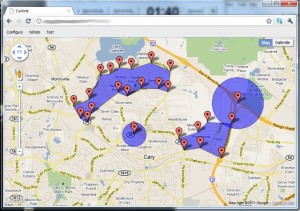 Llamawerx and Sally Williams recently collaborated on a website makeover for her firm Colorful Concepts Interior Design. Sally was our first website client over six years ago, and while her site served her well, many things have changed on the web in that time.
Llamawerx and Sally Williams recently collaborated on a website makeover for her firm Colorful Concepts Interior Design. Sally was our first website client over six years ago, and while her site served her well, many things have changed on the web in that time.
“When Sally asked for suggestions for an update, I think she was thinking about content changes, maybe a few new pictures, that sort of thing,” said Doug Griswold, CEO of Llamawerx. “But I had more in mind, I wanted to let her fabulous pictures tell the story. Her life is interior design; clients looking for an designer want to see results!”
The existing site contained static text and photos. There wasn’t much to catch your eye or hold your attention. After taking stock, it became clear that we could reduce the text down to a couple of short pages and expand her portfolio dramatically. Her previous site showed before and after photos. This worked well for projects where she had before shots, but unfortunately that wasn’t always the case. After some discussion we decided to discard the before shots and focus solely on the results.
Continued Griswold, “I wanted to add movement to the site in a pleasing sort of way. I thought we could fade some of the key pictures in and out. Nothing distracting, just a smooth effect. I also wanted to add a portfolio showcasing here remodeling, new construction and Parade of Homes projects. I’m not a fan of Flash so I chose jQuery to help with the cross-browser effects.”
The results are very pleasing with an interesting scrolling effect leading the viewer through the site.
For more information about Sally and her firm Colorful Concepts, visit the new website at www.colorfulconceptsinteriordesign.com.
 For many years, Llamawerx has developed and maintained on-board firmware for a client’s vehicle tracking product. If you’re familiar with GM’s OnStar, then you’re familiar with the type of system. Our version also targets commercial fleet trucking and adds a feature called geo-fencing. Geo-fencing allows the customer to define a virtual fence that the vehicle is confined to or excluded from. Our client’s existing product provided circular fences, but customers were making a case for square fences, rectangular fences and other shapes. Thus the request to Llamawerx, “Can you add polygon fences to the product?”
For many years, Llamawerx has developed and maintained on-board firmware for a client’s vehicle tracking product. If you’re familiar with GM’s OnStar, then you’re familiar with the type of system. Our version also targets commercial fleet trucking and adds a feature called geo-fencing. Geo-fencing allows the customer to define a virtual fence that the vehicle is confined to or excluded from. Our client’s existing product provided circular fences, but customers were making a case for square fences, rectangular fences and other shapes. Thus the request to Llamawerx, “Can you add polygon fences to the product?”